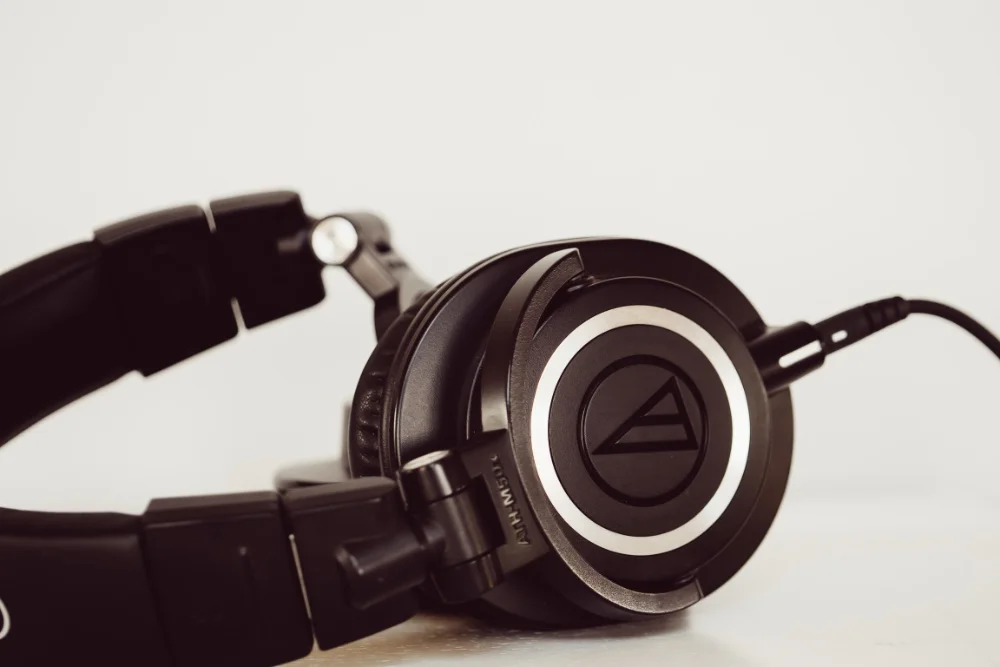Though it can be challenging, finding the best pair of headphones for your music production needs is essential.
There are many options available, and if you ask any given engineer which headphones they prefer, you’ll probably get a different answer each time.
To help you narrow it down to the best of the best, we’ve done all of the research for you. Read on to see our 2023 picks for the best headphones for music production.
Top Headphones For Music Production
There is more than meets the eye when finding the perfect set of headphones for music production. If you are having trouble understanding the finer details, we put together a list of the eight highest-rated headphones for music production in 2023.
1. Audio-Technica ATH-M50X | Closed-Back Studio Headphones
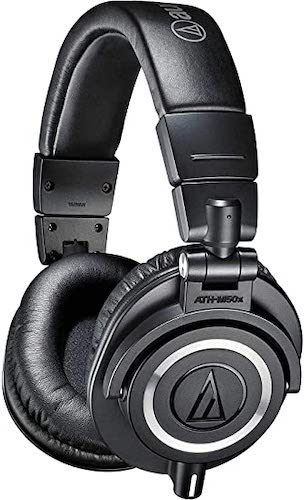
Audio-Technica’s M series headphones are an excellent pick for users who really care about quality. The ATH-M50X’s are incredibly sturdy and comfortable for long wear. They feature large drivers for extended frequency response, sonic accuracy, and isolation.
Whether you plan to use them for tracking, mixing, DJ’ing, or even just some casual listening, these headphones won’t leave you disappointed.
2. Beyerdynamic DT 770 Pro | Closed-Back Studio Headphones
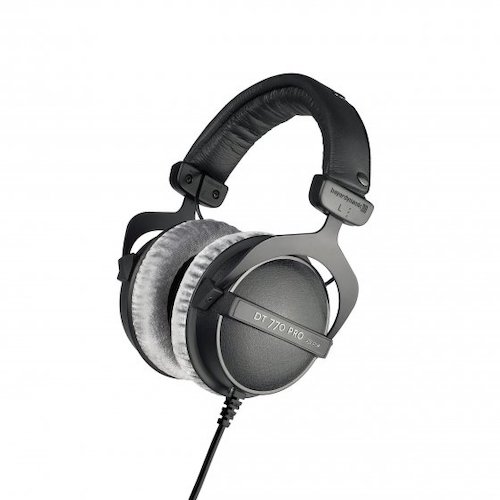
The DT 770 Pros are a perfect compromise between luxury features and affordability. At $159, they feature a mega-wide frequency response from 5 Hz – 35,000 Hz–so they’re perfect for your dog, too. They also include super cushy ear pads for maximum comfort during long monitoring periods, which are easily replaced if worn out.
Detail, transparency, and comfort have set the benchmark for many years running. Like the Sony MDR-7506 above, these are a fantastic and affordable option to consider when shopping for the best headphones for music production.
3. Sennheiser HD 600 | Open-Back Reference Headphones
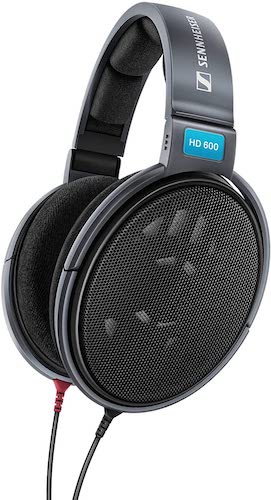
Sennheiser’s award-winning HD 600 headphones have been among the best choices for mixing with reliably excellent detail, accuracy, and clarity since 1997.
In 2003 Sennheiser released a successor to this pair of headphones- the 650’s- which did not quite live up to the quality or fanfare of the original pair. For that reason, we have chosen to stick with the original design here. It’s certainly no accident that they have enjoyed a long legacy as one of the best headphones for music production ever made.
4. Sony MDR-7506 | Closed-Back Studio Headphones
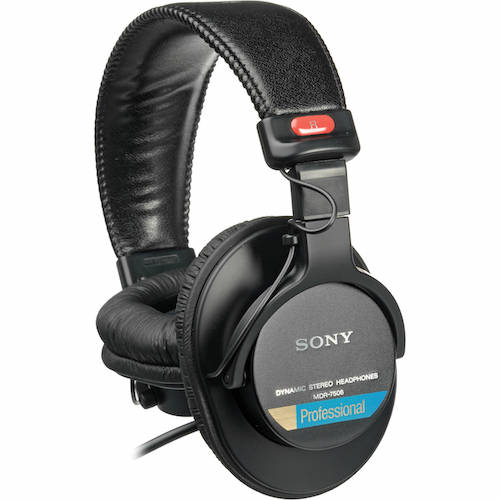
Sony’s MDR-7506 headphones have long been considered an industry standard, and that’s not likely to change anytime soon. These headphones are especially popular in broadcast studios, where isolation is a number one concern. You can imagine how amateurish headphone bleed would sound on a talk show or podcast.
Many users find that these Sony headphones are fairly accurate and useful for critical thinking, despite their closed-back design. These are a great all-around set of headphones that could be useful for tracking, production, mixing, and even mastering.
It’s not unusual to be able to find a pair of these for under $99, which makes them hands-down the best budget headphones for music production that you’ll find.
5. AKG K240 MKII | Semi-Open Studio Headphones
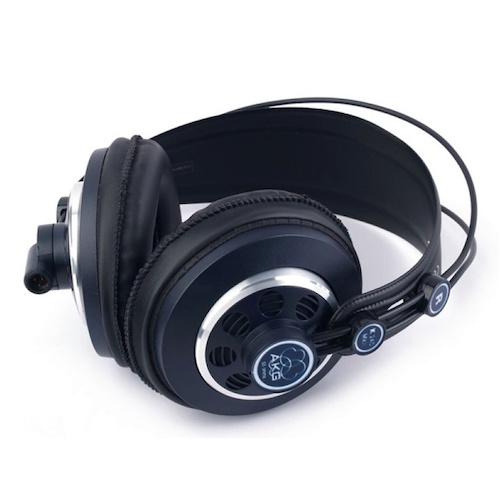
The original K240s, the predecessor to the MKIIs, are one of the most popular studio headphones ever created. That’s in large part due to their semi-open design, which strives to incorporate the ‘best of both worlds’ in a pair of headphones for music production.
Semi-open means you get some of the airiness and natural sound reproduction for accurate mixing, with some of the isolation you’d want for tracking.
These are great pairs of headphones on either side of the glass. They’re perfect for vocalists who sometimes need to take an ear out to get their pitch right; they’ll be able to hear a bit of themselves in the room without the extreme isolation of closed-back headphones.
6. Shure SRH1840 | Open-Back Premium Headphones
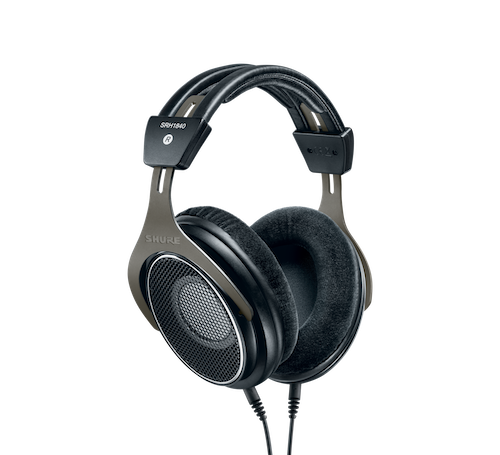
The SRH1840s boast one of the most ‘speaker-like listening experiences you could ever achieve with a pair of headphones. This is a huge advantage and helps you minimize some of the worst drawbacks to monitoring through headphones, like the ones we described above.
These headphones provide a spacious soundstage, which, along with their detailed frequency response, makes them one of the very best headphones for music production and critical listening.
7. Focal Listen Pro | Closed-Back ‘Pro-sumer’ Headphones
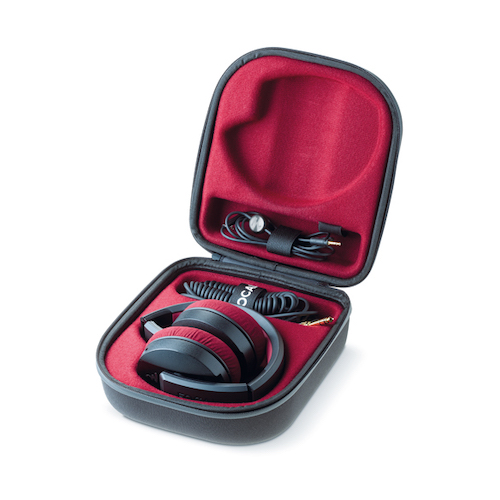
The Focal Listen Professionals are the successor to the popular Spirit headphones. The Listens combine professional reference quality with consumer features, making them an interesting and unique choice for someone who would use them for music production in addition to regular daily use.
Featuring universal smartphone compatibility (as well as a remote and microphone), you can take calls between checking mixes on your device. Despite the closed design, these headphones provide a similar listening experience as semi-open headphones.
8. Neumann NDH20 | Closed-Back Studio Headphones
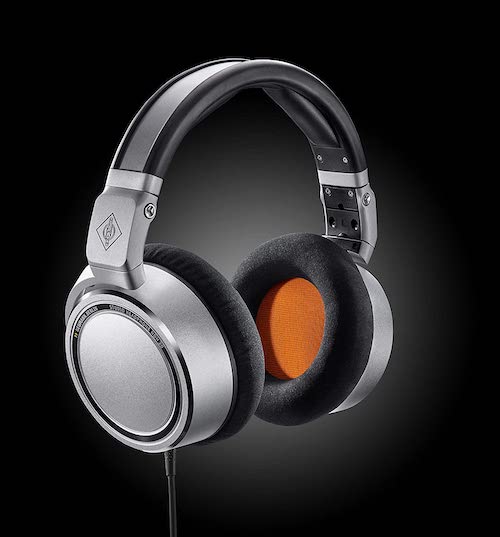
The NDH20 headphones for music production strive to overcome the mechanical disadvantages of the average closed-back design. This pair delivers standard isolation with the linear frequency response, accurate stereo imaging, and the kind of audiophile resolution that you would get from an actual Neumann loudspeaker.
These are perfect for any critical monitoring situation, even in a noisy and distracting environment.
What Are Studio Headphones & Why They Matter
A good pair of studio-quality headphones is necessary for any music recording set-up. Your headphones will be your main and best monitoring source for many home recording setups. This is also true for engineers who record “on-the-go”. Quality headphones are essential for managing the finer details in a mix, even for professional engineers.
The main difference between studio headphones and “consumer cans” is how they handle the audio output. Studio headphones are primarily designed for critical listening and sonic accuracy, while non-studio headphones have built-in EQ curves to make for the most “pleasant” listening experience.
Studio headphones usually fall into two categories: open-back and closed-back headphones.
Open-Back Headphones
Open-back headphones are called such because they feature vented ear-cups that allow air to flow openly through and around your ears and the audio driver. This airflow is essential as it prevents frequency build-up inside the headphones.
These are considered the best type of headphones for music production as they can reproduce the sound stage accurately and naturally. For this reason, open-back headphones are the best alternative to mixing on studio monitors.
One of the advantages of open-back headphones is that they are generally more comfortable to wear for long periods than closed-back headphones. On the other hand, due to their ‘open’ design, they will leak more sound the louder they are, which may concern some engineers.
Closed-Back Headphones
Closed-back headphones are self-explanatory in that their name refers to the “closed” cup design. Since this headphone style isolates your ears from the surrounding environment, they are more like noise-canceling headphones than open-back headphones.
This type of headphones is excellent to use while tracking as they won’t leak sound into your mic. They are also handy if you need to monitor at low levels and still be able to hear details without outside interference.
The downside to closed-back headphones is that they will experience a build-up of low-level frequency inside of the closed cans. This build-up results in a sound that is less natural-sounding, more colored, and overall less accurate.
While closed-back headphones aren’t optimal for mixing and mastering, they are an excellent option for when privacy and discretion are a factor (such as for tracking).
Semi-Open Headphones
These headphones’ names tell you everything you need to know about them. They are a balanced design between open and closed-back headphones. They are mainly meant to provide a level of sonic isolation (as closed-back cans are) while still allowing some airflow to prevent excess low-end build-up.
Though neither effect is as prominent as it would be with one style or the other, you still get an excellent degree of balance and versatility with semi-open headphones.
Mixing With Headphones
When it comes to mixing, there’s no question that the majority of engineers don’t depend solely on their headphones as a monitoring source. The three main reasons limiting mixing with headphones are colored frequency responses, lack of crossfeed, and the unnatural stereo field that headphones create.
Headphones tend to maximize low-end response due to how the drivers release frequencies, which can build up in the earcups. This is what we mean when we refer to “colored frequency responses.” Since mixing aims to create as flat and accurate a sound as possible, mixing with headphones can be tricky unless you are familiar enough with your headphones to know where to compensate for these distortions.
Another issue with using headphones to mix is the lack of crossfeed. Crossfeed is a natural aural phenomenon when we listen to a pair of stereo speakers out in front of us. Our left ear hears the left speaker and the right ear hears the right speaker and then each ear hears the opposite side milliseconds later—our brain processes all of that within microseconds.
In other words, crossfeed is the blending of two sound sources which our brain interprets as one cohesive whole.
On headphones, there’s no crossfeed happening. Instead, we just hear the left and right sides individually. Sometimes this confuses our brain into thinking that certain sonic information is incomplete missing from the context. The result is a bigger picture that doesn’t sound as full as it should.
The final major issue with using headphones for mixing is that you will have a much wider stereo field. This is because each speaker is literally piped into either side of your head, which can make it tough to establish a good stereo image.
Center-panned elements of your song will sound like they’re happening right in between your ears rather than out in front of you on speakers. If you make slight left or right adjustments, they will be highly noticeable through headphones but much less so through speakers. If you have ever attempted to create a stereo image solely with headphones, you will probably have realized that what you thought were drastic pans in your mix were far more subtle through monitors.
It’s safe to say that in the debate over mixing on studio monitors vs. headphones, there’s no substitute for a good set of monitors. If possible, headphones should be reserved for tracking or at least to be used in addition to your monitors.
Best Headphones For Music Production
Despite the massive field of quality headphones out there, choosing a pair that’s right for you can be tricky. We hope this list takes some of the guesswork out of it, highlighting some of the best open- and closed-back studio headphones available.
Want more information on using headphones vs. studio monitors? Check out the following article:
Mixing on Headphones vs. Monitors
Alos be sure to check out all our studio headphone reviews.


